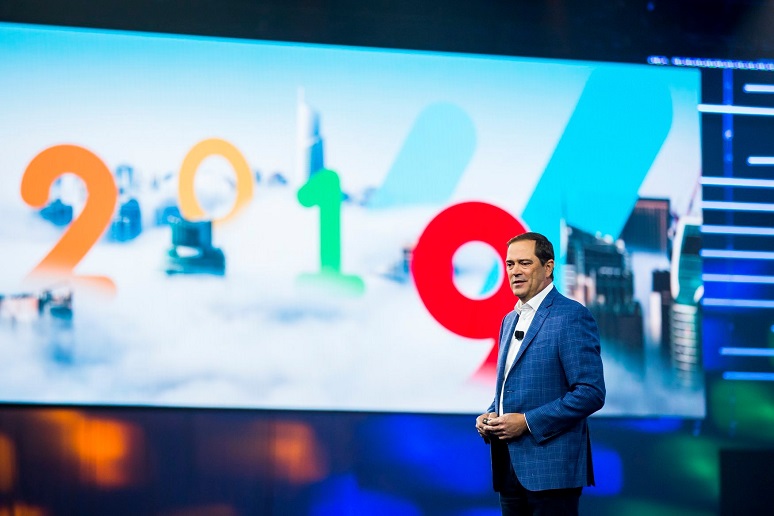At
Cisco Live this week, Cisco made several announcements aimed at reducing friction in collaboration. Users are no longer impressed with HD video and audio or mobile apps; today there is more interest in updates and enhancements that drive experience and engagement. For Cisco, that means making the Webex suite more unified, intuitive, and cognitive for employees, administrators, and more.
While Webex Meetings received several updates a few months ago, this time around Webex Teams (formerly Cisco Spark) got the most attention -- starting with enterprise-class telephony. Webex Teams can now be used as a calling client with premises-based (UCM) or cloud-delivered (HCS or Webex Calling) services.
The integrated calling strikes directly at a common complaint with collaboration apps: app switching… having too many apps, or app fatigue. Team collaboration apps feel burdensome when conversations are scattered across too many services. Webex Teams can now be used for messaging, meetings, and calling. Webex Teams clients are available for desktop computers, mobile devices, and some IP phones.
Cisco last fall announced Webex Calling for service providers and last spring made it available for its VAR channel. The service stems from what was previously known as BroadCloud, a wholesale service from BroadSoft, which Cisco acquired in February 2018. Cisco has given it a new name, an expanded channel, and a native integration with a team chat app. Webex Calling is now available in 41 global markets and through a global network of 89 active channel partners.
Of course, not all of Cisco’s collaboration customers are on Webex Teams. Jabber remains a very popular and growing option for customers that prefer premises-based messaging services. Jabber continues to grow, with more than 45 million users.
Jabber customers will soon have the option of a new user interface (UI). New may not be the right word as the UI looks familiar -- in fact, it looks a lot like the Webex Teams UI. The change gives Cisco’s team chat users a consistent experience across premises-based or cloud-delivered implementations. A consistent UI has numerous benefits, including reduced friction and training if/when an organization moves to the cloud.
In addition, Cisco announced that searchable transcriptions are coming to Webex Meetings this month. Transcription is part of Cisco’s ongoing umbrella effort to be a leader in cognitive collaboration. Other aspects of cognitive collaboration include in-room analytics, diagnostics, Webex Assistant, proximity pairing, and People Insights.
People Insights is the relationship intelligence application Cisco announced in March from the
keynote stage at Enterprise Connect 2019; it provides people and company profiles for colleagues and meeting participants. Cisco this week announced expanded support for People Insights across Webex -- calling, meeting, and messaging. I’ve been using the service and it does indeed find common bonds. It’s a personalized, wiki-CRM of sorts. People Insights is now accessible from the Webex Meetings mobile clients as well as the Webex Teams desktop and Web clients. And consistent with how Cisco is extending its unified experience strategy, People Insights is coming to Jabber in August.
People Insights is also getting a management portal, so users and administrators have more control over what is seen internally and externally. This was necessary as the application was designed for public information, but has since been bolstered with private organizational information such as telephone numbers, titles, and email addresses.
Cisco Live has been an announcement-filled event. Here are some of the additional announcements related to collaboration:
- Deeper integrations with enterprise workflow apps and productivity tools, including new contact center integrations with Salesforce, Dynamics, Zendesk, and ServiceNow; new administrative controls with Webex Control Hub Pro Pack for granular security controls; improved integrations with Google G Suite and Microsoft Office 365
- Expanded geographic reach and options, including coverage for dial-in meetings in 24 additional countries; new GDPR-compliant data centers in London, Frankfurt, and Amsterdam for Webex Teams; and improvements to Webex Edge audio
- New advanced meeting diagnostics capabilities, including more than 20 new data points for quality diagnostics, such as one-minute intervals for trending information, and expanded visibility into connection details and endpoint components
- Webex Device enhancements, including a new re-redirect feature that allows a Webex Board to be a touchscreen for a Windows 10 PC; Webex Board also now supports facial recognition and Webex Assistant, expanded room and desktop device APIs, and improved noise mitigation capabilities for all room systems
- The rebranding of the Customer Journey Platform (CJP) CCaas offer to Cisco Webex Contact Center as Webex becomes Cisco’s brand for cloud collaboration worldwide
Cisco has been offering conferencing, telephony, UC, and contact center solutions for some time now, but never before has the portfolio been so aligned. The industry as a whole has transitioned from connectivity (VoIP, Internet, mobile, etc.) to collaboration. It’s a nuanced difference, but collaboration is more about what occurs after connection. These updates reduce friction through increased unification, consistency, and contextual services.
Dave Michels is a Contributing Editor and Analyst at TalkingPointz.









